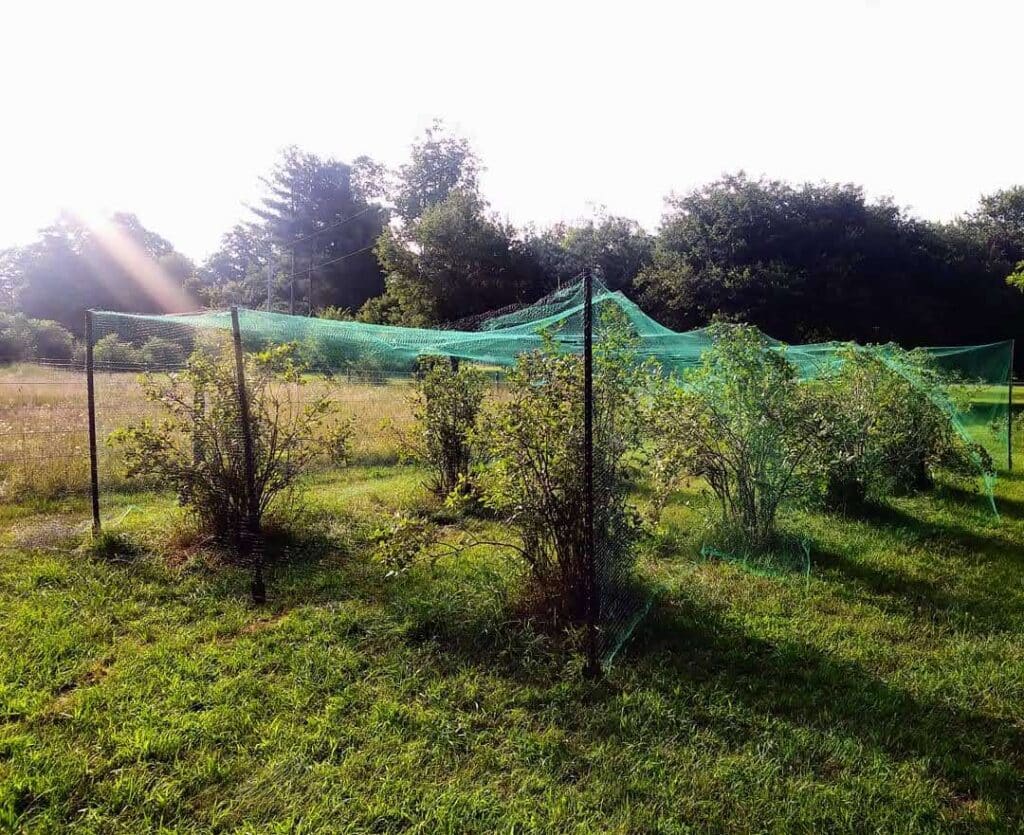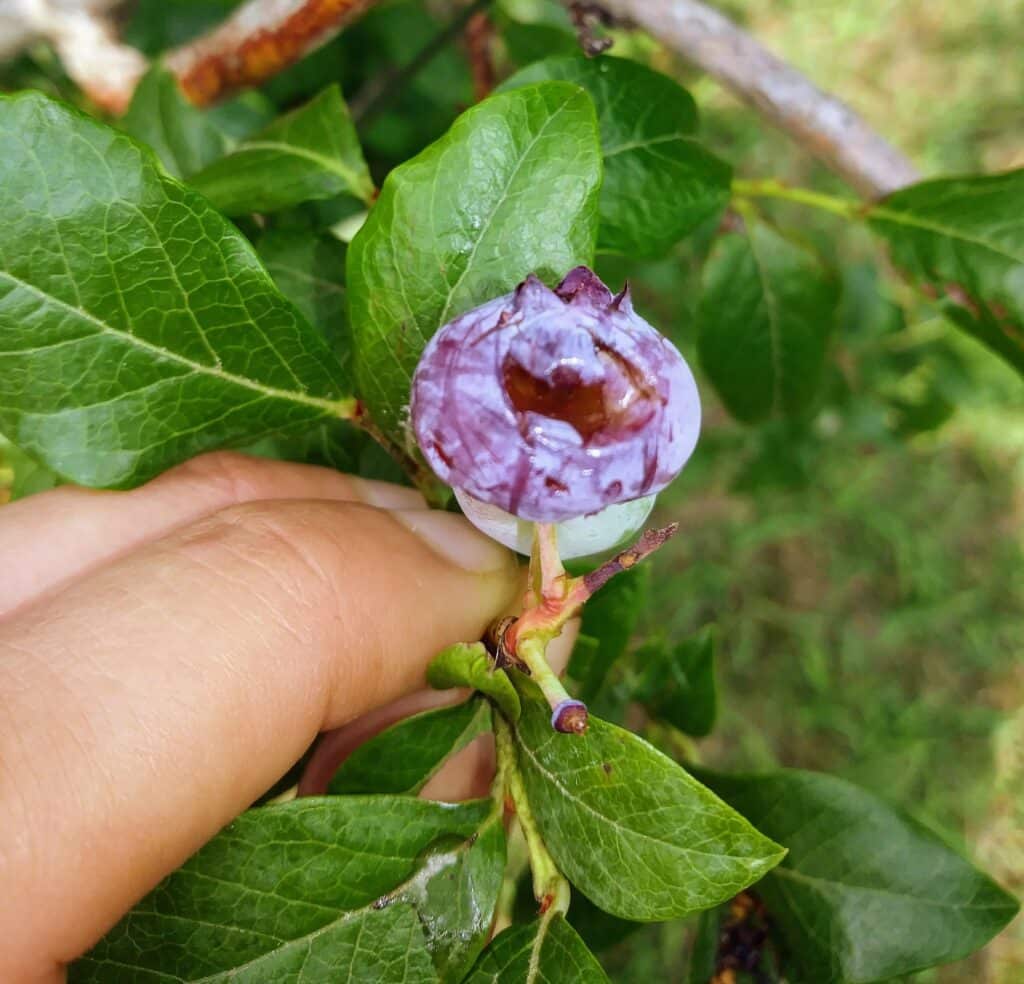What’s the real difference between organic and conventional farming? Is organic certification merely hype, or does it offer real benefits to you, the consumer, and our planet at large?
Table of Contents
When it comes to making the best food choices for your health and the planet, the correct answer is not clear-cut. Food production can be polarizing, and choosing the brands and farming strategies you support becomes a statement about your values.
Here’s an overview of the differences between organic and conventional farming to help you answer this question for yourself.

Organic Farming Defined
Put in simple terms, organic farming is a production system that works to remove synthetic components from the process as much as possible. According to the USDA:
“a production system that is managed to respond to site-specific conditions by integrating cultural, biological, and mechanical practices that foster cycling of resources, promote ecological balance, and conserve biodiversity.”
USDA Organic Standards
This cultivation strategy is about more than food. Rather, organic agriculture aims to leave pastures and planting space a little better than farmers found them after every growing season. These farmers rely on natural processes, biodiversity, and inputs, and amendments for fertility and pest management.
While conventional agriculture requires synthetic interventions to fight off pests, provide plant nutrition, and deter weeds, organic techniques focus on natural principles to accomplish the same goals.
In this way, organic farming aims to create healthy soil for growing healthy plants, which in turn makes for healthy animals and people.
Understanding Organic Certification
Organic farming is both a philosophy and a certification standard. Farms can follow organic principles without becoming certified. In fact, achieving certification can be a challenging, expensive process and isn’t realistic for all growers.
See also: Glyphosate in Oats
Organic standards vary by country. In the United States, the certification requirements were established in 2002 and are set by the USDA and backed by the National Organic Standards Board. This volunteer group consists of farmers, retailers, certifying agents, scientists, and other qualified personnel.
Qualifying farms must meet the following standards (among many others):
- Land must be free of prohibited substances for three years before organic crops can be harvested
- Organic seeds must be used when available, and GMOs are prohibited
- Pests, weeds, and disease must be primarily managed through physical, mechanical, and biological controls before the use of organic-approved synthetics
- Meat animals must be raised under organic management for at least the final third of gestation
- All livestock feed must be 100% organic, and animals must have year-round access to the outdoors
- Dairy animals must be managed organically for 12 months before their milk qualifies
- Cows and other ruminants must be on pasture for the entire grazing season and receive at least 30% of their feed from pasture)
- All products labeled as organic must contain at least 95% certified organic material, all products labeled “made with organic materials” must contain at least 70%
Organic Farming Practices vs. Conventional
What does organic farming look like in practice? Here’s a snapshot of the principles and practices that organic farms strive to follow.
Promote Soil Health
Healthy soil makes up the foundation of organic agriculture. Farmers make choices designed to maximize beneficial microbes such as bacteria, fungi, nematodes, and more in their growing space to help plants achieve maximum productivity while being less susceptible to pests and disease. Likewise, healthy organic soil contains aggregate compounds that bind it together, lowering erosion rates.
Soil health is measured by the number of microorganisms present, the ratios of essential nutrients, its water retention rates, the amount of organic material present, and other factors. The best organic production systems will work to build up soil health over time.
Conventional farming depletes soil health
Compare organic farming practices to conventional farming, and you notice a key difference: conventional farming reduces soil health with excessive tillage, a practice that actually releases more greenhouse gasses into the environment, which speeds the rate of climate change.
Plant Cover Crops
Unlike cash crops sold for profit, cover crops are grown for the sole purpose of improving soil health. Most are planted in fields that would otherwise be left barren—usually between growing seasons—and act as a living mulch to protect the soil from erosion and weed seeds.
The most significant benefit of cover crops comes later when they are tilled into the soil. Frequently farming the same patch of land pulls nutrients from the ground and leaves it depleted. Conventional farming attempts to fill the gap with synthetic, petroleum-based amendments that lack the nutritional complexity of natural ones. Worse still, they tend to lead to dire environmental problems like water pollution, loss of soil biodiversity, and erosion.
By growing plants with no purpose other than to return them to the soil, cover crops are invaluable for farmers to increase their land’s fertility without harmful amendments.
Conventional farming leaves barren land
Without time for holistic practices like planting cover crops, conventional farming has led to a process known as desertification in some areas. Battered and abused soil can no longer support crops. The end result is barren land.
Practice Crop Rotation
Conventional agriculture tends to rely on large swaths of monoculture where the same crop is planted in a field for years on end. This can deplete the soil of key nutrients that the plant variety feeds most heavily on while also allowing the pests that feast on it to better establish themselves from one year to the next.
Organic farming counteracts these nutrient deficiencies by rotating crops every growing season. By changing what grows where, crop rotation works to improve soil health, optimize the soil’s nutrient content, and break pest disease cycles—all without toxic chemical amendments.
Conventional farming crop rotation has been on the decline
This study, from the Journal Nature, highlighted the decline in crop rotation among conventional farms, and touted the benefits of more aggressively rotating crops using organic methods.
Make and Utilize Compost
Compost is a form of natural soil fertility that is created when carbon-rich materials like straw and leaves break down with nitrogen-rich materials like food scraps and animal manure. The result is an organic soil additive that adds an infusion of nutrients (along with billions of beneficial microorganisms) to the soil in a closed-loop system.
Some organic farmers make their own compost; others source it from certified suppliers that often have access to food waste or animal manure at an industrial scale.
Conventional farms use synthetic fertilizers
By contrast, conventional farmers use synthetic fertilizers made from fossil fuels and other non-renewable and polluting resources.
One issue agricultural scientists have raised is the inability to produce enough manure to sustain our massive conventional farms.
Practice No-Till as Much as Possible
Plowing the ground is a standard part of planting, but any form of soil agitation leads to problems in the long run. Too much soil disturbance breaks up root systems and destroys the fungal networks under the ground, making the soil more vulnerable to compaction and erosion.
Many organic farmers strive to till as little as possible to keep the soil structure intact. Rather than plowing up the soil’s surface to remove weeds before planting, they utilize specialized equipment, such as a roller-crimper attachment on a tractor, to mow down cover crops and plant seeds throughout it.
Conventional farms and excessive tillage
By contrast, conventional farms are constantly disrupting the soil with constant tilling. Studies show excessive tillage leads to runoff, soil erosion, and the ultimate destruction of our soil.
Integrated Pest Management
Unless they are indoors (and often even then!), farms are going to deal with bugs. Many are nuisances that can ravage crops, but others are beneficial and keep the pests populations in check.
Integrated pest management aims to look at the complete picture of pest problems to come up with holistic solutions that work long term. Too many aphids on the cucumbers? Consider releasing natural predators like ladybugs and praying mantises. Crop rotation, companion planting, and using certified organic targeted sprays are all measures of organic pest management.
Likewise, organic farmers aim to cultivate the healthiest soil they can to give plants natural defenses to fight off insect attacks.
Conventional farming and broad spectrum pesticides
Conventional eradication strategies usually rely on broad-spectrum insecticides that target all insects in an area rather than just the ones posing problems. Not only does this kill off populations that could naturally keep the pests in check, but it gives species ample opportunities to evolve and render the poisons ineffective. Rampant insecticide use also leads to biodiversity losses and can pollute the greater ecosystem.
Holistic Livestock Management
Beyond plant care, organic agriculture strives to do right by animals through the humane treatment of livestock. Standard organic practices emphasize keeping animals on pasture, feeding them fully organic diets, and restricting antibiotics and artificial growth hormones. Organic livestock manure is often used as organic fertilizer, and they are often grazed rotationally to preserve pastures and protect them from overuse.
Conventional farming utilizes concentrated animal feeding operations (CAFOs)
In contrast to organic farming, which factors in the health of animals, conventional farming treats animals solely as commodities. The result is the sad state of animal agriculture that uses CAFOs to grow meat. CAFOs rely heavily on antibiotics to stave off disease and are known for having terrible living conditions for animals. Senators Corey Booker and Elizabeth Warren have proposed legislation that would significantly curtail CAFO operations in the United States.

Going Beyond Organic?
While many believe that USDA organic certification provides an excellent starting point for sourcing food grown right, others argue it doesn’t go far enough. One significant critique of organic standards is that they allow farmers the leeway to technically follow organic standards while ignoring the intent behind certification in the first place—producing food in environmentally sustainable ways.
For example, some certified organic farms use more significant amounts of polluting pesticides than their conventional counterparts, but the practice is excused because they technically have natural origins. Likewise, organic livestock operations can look deceptively similar to conventional. “Outdoor access” for meat birds can be as basic as a small cement compound that the birds never choose to enter.
So what’s the alternative? If you’re looking for food grown sustainably, there are other certifications to seek out. Some are considered an additional level of certification after a farm qualifies as organic, while others replace it altogether.
Certified Naturally Grown: Considered the grassroots alternative to organic certification, Certified Naturally Grown is a national accreditation that ensures food is produced without synthetics or GMOs. It rose in popularity as a way for farmers to differentiate themselves from conventional growers without the cost and extensive paperwork associated with organic certification.
Regenerative Organic Certified: Established in 2017, the Regenerative Organic Alliance promotes the adoption of regenerative organic practices to ensure farms meet the highest standards for soil health, animal welfare, and fair treatment of farmworkers. Qualifying farms must show evidence of building up their soil’s organic matter, practicing cover cropping and crop rotations, provide livestock with the freedom to express themselves as nature intended, and pay workers fair wages.
Demeter Certified Biodynamic: Certified Biodynamic farms go beyond organic practices by meeting minimum standards set by Demeter International. In essence, farms must be managed like a living organism and be as self-contained and self-sustained as possible while following the cycles of nature. Qualifying farms must prioritize biological diversity by setting aside at least ten percent of farmland for wildlife and using specific preparations designed to promote soil health.
Food Justice Certification: Focused primarily on employee welfare, Food Justice Certification aims to empower everyone from field workers to retailers in the food system with just and fair practices—including fair wages.
The Non-GMO Project: Dedicated to tracking the rise of GMO foods in the global food system, the Non-GMO Project verifies farms committed to producing only non-GMO foods and products.